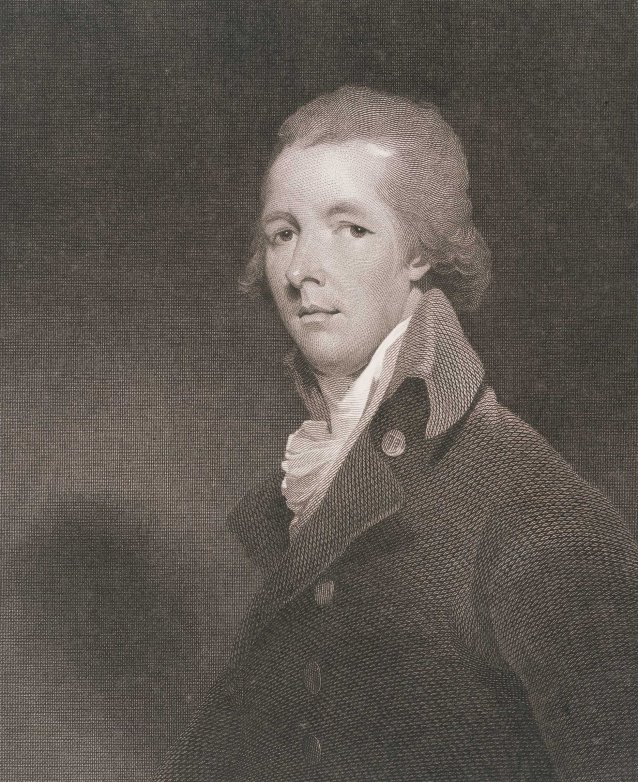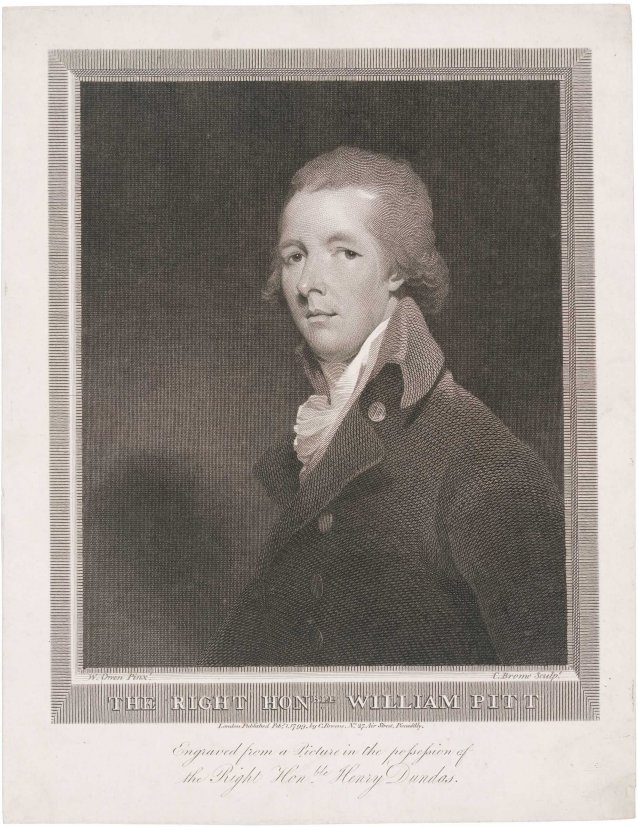William Pitt the Younger (1759-1806) was Tory prime minister of Great Britain from 1783 to 1801, and of United Kingdom from 1804 to 1806. Pitt was a member of a wealthy family; his father William Pitt, 1st Earl of Chatham, was prime minister in the late 1760s. Pitt the Younger was only 24 when he came to office in 1783, and few thought his leadership would last. Contrary to expectations, he maintained a steady hand through tumultuous decades encompassing the French Revolution, the Act of Union and the Napoleonic Wars. He introduced the India Act of 1784 to curb the domination of the East India Company; imposed taxes to address the catastrophic national debt; influenced the introduction of banknotes and saw the passing of the Constitutional Act of 1791, dividing Quebec into French and English provinces. He cracked down on agitators for reform, and to quell Irish unrest unified Great Britain and Ireland in 1801. Soon after, unable to persuade the intermittently mad King George to lessen severe restrictions on Catholics, he resigned. (The first authorised Catholic mass was celebrated in Parramatta in 1803, but Catholic services were banned in New South Wales in 1804.) In 1804 Pitt’s successor, Addington, resigned and he became prime minister again, so that he was in office when Nelson won the Battle of Trafalgar. Pitt had a sound head for figures and during this second period - while opposition to slavery was coming to a head - he was also Chancellor of the Exchequer. Still the youngest British prime minister, he was a lifelong bachelor and only 46 when he died. As prime minister when New South Wales was founded, Pitt is commemorated in Pittwater, named by Arthur Phillip in 1788; Pitt Street, Sydney, Pitt Town on the Hawkesbury, established in 1810; and Pitt Water in Tasmania. The sailing ship William Pitt brought convicts to New South Wales in 1806.
Collection: National Portrait Gallery
Purchased 2016
The National Portrait Gallery respects the artistic and intellectual property rights of others. Works of art from the collection are reproduced as per the
Australian Copyright Act 1968 (Cth). The use of images of works from the collection may be restricted under the Act. Requests for a reproduction of a work of art can be made through a
Reproduction request. For further information please contact
NPG Copyright.

















